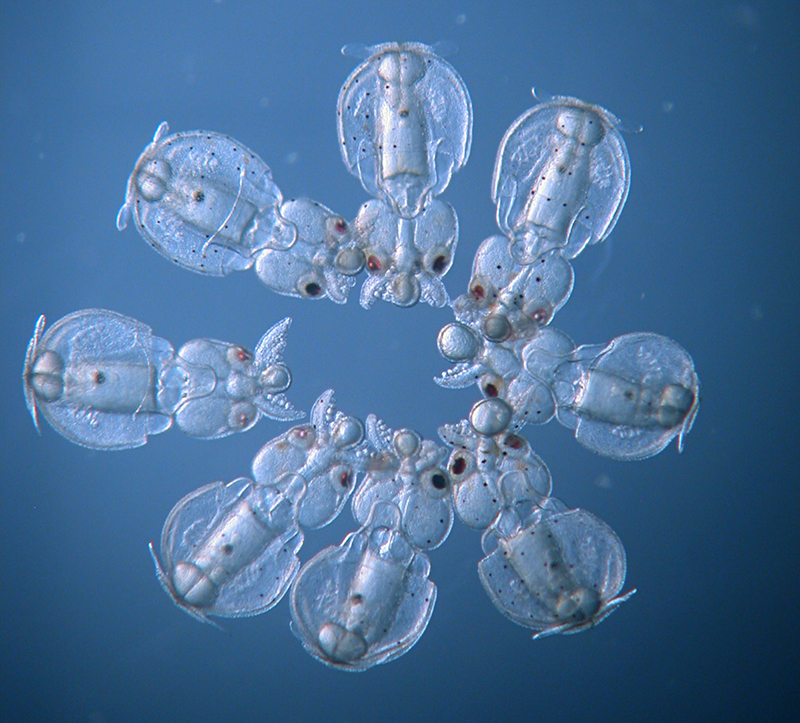CRISPR enables very precise, speedy, and low-cost DNA edits. Put simple, the ingenious molecular workings of the method are often described as something that allows us to 'cut' and 'paste' genes; in humans it promises to give us a way of tackling disease and killing superbugs at the genetic level.
In this case CRISPR-Cas9 genome editing was used on Doryteuthis pealeii (the longfin inshore squid) to disable a pigmentation gene, turning off the pigmentation usually found in the squid eye and inside specialised skin cells called chromatophores.
"This is a critical first step toward the ability to knock out – and knock in – genes in cephalopods to address a host of biological questions," says marine biologist Joshua Rosenthal, from the Marine Biological Laboratory (MBL) at the University of Chicago.

The longfin inshore squid is of huge interest to scientists, and studies of Doryteuthis pealeii going as far back as the 1950s have helped to make significant contributions to the field of neuroscience – including the first description of the nerve impulse.
Cephalopods (squid, octopus and cuttlefish) have larger brains than all other invertebrates, the ability to recode their own genetic information, and some rather amazing party tricks (such as being able to change colour instantaneously).
Being able to edit genes in these creatures is a major new development, and one which could see squid join the ranks of model organisms in genetic research, such as fruit flies and zebrafish. The study of evolution, medicine, robotics, materials and even artificial intelligence could all benefit.
"They've evolved these big brains and this behavioural sophistication completely independently," Rosenthal told NPR. "This provides an opportunity to compare them with us and see what elements are in common, and what elements are unique."
What makes this new achievement such a success is the delicate way in which CRISPR had to be applied: getting past the tough outer layer of the single-celled squid embryo with micro-scissors and a quartz needle, and then hatching it.
The timing of the edits was crucial, but after a lot of false starts (and broken needles) the team was able to develop embryos with fewer pigmented cells and lighter eyes.
It's hoped that because these squid are masters at editing their own genetic code, this research could push our own techniques even further. The next step is to try the technique in smaller types of squid that are easier to raise (and study) in the lab.
Reference
Crawford K, Diaz Quiroz JF, Koenig KM, Ahuja N, Albertin CB, Rosenthal JJC. Highly Efficient Knockout of a Squid Pigmentation Gene [published online ahead of print, 2020 Jul 26]. Curr Biol. 2020;S0960-9822(20)30985-4. doi:10.1016/j.cub.2020.06.099
Ubigene Biosciences is co-founded by biological academics and elites from China, the United States, and France. We are located in Guangzhou Science City, which serves as a global center for high technology and innovation. Ubigene Biosciences has 1000㎡ office areas and laboratories, involving genome editing, cell biology technology, and zebrafish research. We provide products and services for plasmids, viruses, cells, and zebrafish. We aim to provide customers with better gene-editing tools for cell or animal research.
We developed CRISPR-U™ and CRISPR-B™(based on CRISPR/Cas9 technology) which is more efficient than general CRISPR/Cas9 in double-strand breaking, CRISPR-U™ and CRISPR-B™ can greatly improve the efficiency of homologous recombination, easily achieve knockout (KO), point mutation (PM) and knockin (KI) in vitro and in vivo.
Genome Editing Platform
——Focusing on the Application of CRISPR-U™ and CRISPR-B™ Gene Editing Technology
1. Provides various types of gene-editing vectors for different species.
2. Provides different virus packaging services, including lentiviruses, adenoviruses and adeno-associated viruses.3. Provides high-quality services for gene knockout, point mutation and knockin cell lines.
Cell Biology Platform
——Focusing on primary cell
1. Provides over 400 types of primary cells.
2. Provides culture strategies and related products for different cell types.3. Provides cell biology-related services such as cell isolation, extraction and validation.
 Subscribe Us
Subscribe Us Gene Editing Services
Gene Editing Services
 EZ-editor™
EZ-editor™ Red Cotton Gene knockout Project
Red Cotton Gene knockout Project








